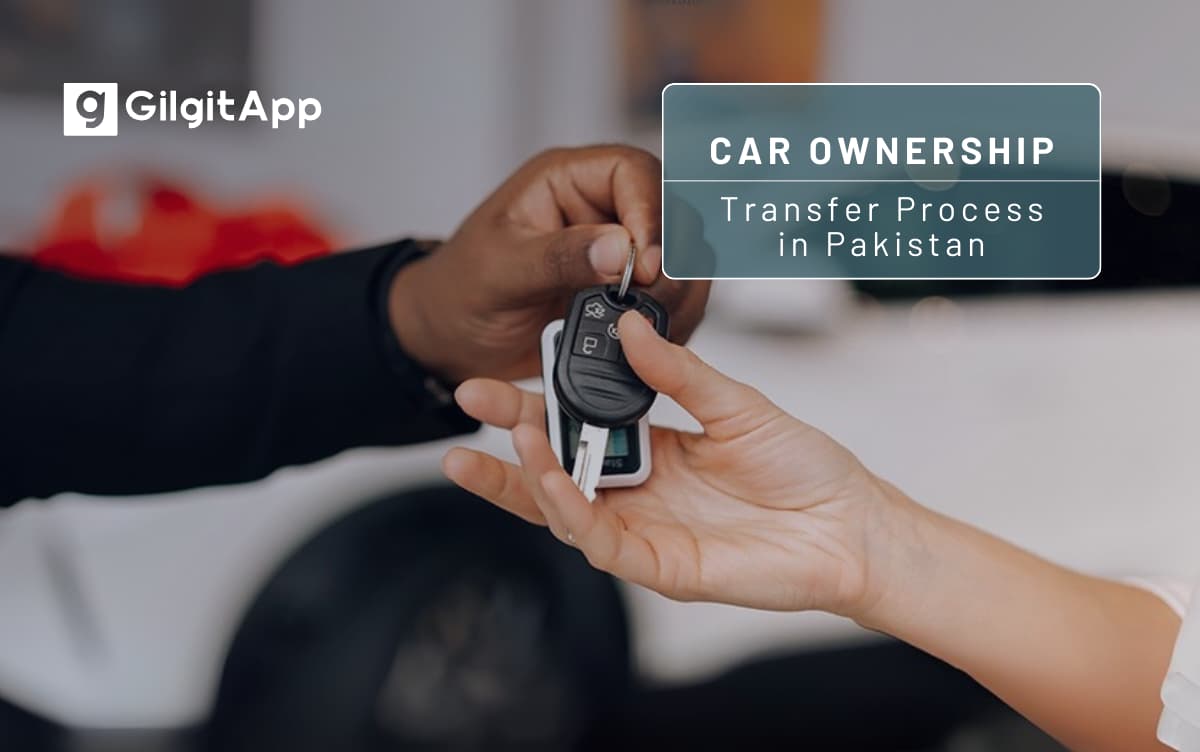Car Ownership Transfer Process in Pakistan (Step by Step)
Step-by-step guide to car ownership transfer in Pakistan. Learn documents, fees, biometric process, online options & tips for a smooth transfer.

Buying or selling a car in Pakistan is always an exciting experience. For the buyer, it feels like a new chapter of freedom. For the seller, it’s the joy of upgrading or meeting a financial goal. But there’s one critical step that many people ignore — car ownership transfer.
If you don’t transfer the car into the buyer’s name, the old owner remains legally responsible. This means challans, token tax notices, or even accident liabilities can land on the wrong person. To avoid such problems, it’s important to understand the step-by-step process of car ownership transfer in Pakistan.
In this guide, we’ll highlight everything you need to know: documents, fees, deadlines, online options, and useful tips. By the end, you’ll know exactly how to complete the process without stress.
Why Car Ownership Transfer Is Important?
In Pakistan, many people delay transferring car ownership because they think it’s just a formality. In reality, it’s a legal requirement and protects both buyer and seller.
Here’s why it matters:
- Traffic fines and challans: If the car remains in the seller’s name, all fines still go to them, not the new driver.
- Accidents and legal issues: In case of an accident, the registered owner may be held responsible.
- Resale problems: Buyers will hesitate to purchase a car that isn’t officially transferred.
Step-by-Step Car Ownership Transfer Process in Pakistan
The process can be broken down into simple steps.
Step 1: Collect the Required Documents
Before visiting the Excise and Taxation Office (ETO), make sure you have these documents ready:
- Original CNIC of buyer and seller
- Photocopies of CNIC of both parties
- Original registration book or smart card of the vehicle
- Sale deed or transfer letter (signed by buyer and seller)
- Updated token tax payment receipt
- Original file of the car (if available)
Step 2: Visit the Excise and Taxation Office
Both buyer and seller (or their representatives) must visit the ETO where the vehicle is registered. Each province has its own Excise Department (Punjab, Sindh, KPK, Islamabad), so you need to go to the correct office.
Step 3: Complete Biometric Verification
Biometric verification is now compulsory in most provinces. Both parties give thumb impressions at the Excise office through NADRA devices.
Step 4: Submit Documents
After biometric verification, submit all the required documents with the transfer application. The officer will check the details and issue a receipt.
Step 5: Pay the Transfer Fee and Pending Taxes
Next, you need to pay the ownership transfer fee. The fee depends on the car’s engine capacity:
- Up to 1000cc: Lower fee
- 1001cc – 1800cc: Medium fee
- Above 1800cc: Higher fee
Step 6: Wait for Verification and Approval
Once the application and payments are submitted, the Excise Department verifies the car’s records. They check if taxes are paid, documents are original, and there are no pending issues.After approval, the transfer is confirmed in the system.
Step 7: Collect the New Registration Card
The last step is to collect the new smart card (or registration book) in the buyer’s name.The waiting time depends on the province. Usually, it takes 7 to 15 working days. Sometimes it can take longer if there’s a backlog, so it’s best to track your application online if the option is available.
Online and Digital Transfer Options
Good news! Some provinces are introducing online transfer systems to make things easier. For example, Punjab allows car owners to check and verify records through the Excise online system.
While full online transfer is still limited, digital tools are slowly replacing long queues at Excise offices. Always check the official Excise website of your province for the latest updates.
Useful Tips for a Smooth Transfer
- Always go with the buyer/seller in person to avoid fraud
- Don’t hand over the car until you complete biometric verification.
- Clear all dues (token tax, challans) before starting the process.
- Keep multiple photocopies of documents ready.
- For peace of mind, track your application online where possible.
Final Thoughts
The car ownership transfer process in Pakistan may look complicated, but when you break it into steps, it becomes simple. Whether you’re buying or selling, this process protects you from legal and financial issues.
FAQs
What documents do I need to transfer car ownership?
You’ll need the CNIC (original + copy) of the buyer and seller, the registration book/smart card, a signed sale deed/transfer letter, an up-to-date token tax receipt, and (for imports) customs papers.
Is biometric verification mandatory?
Yes, most provinces require biometric verification of both buyer and seller to prevent fraud. It’s done at the Excise office or an approved NADRA/e-service centre.
How long does the transfer take?
If your file is complete, expect 7–15 working days. Delays happen when documents are missing, dues are unpaid, or the office has a backlog.




